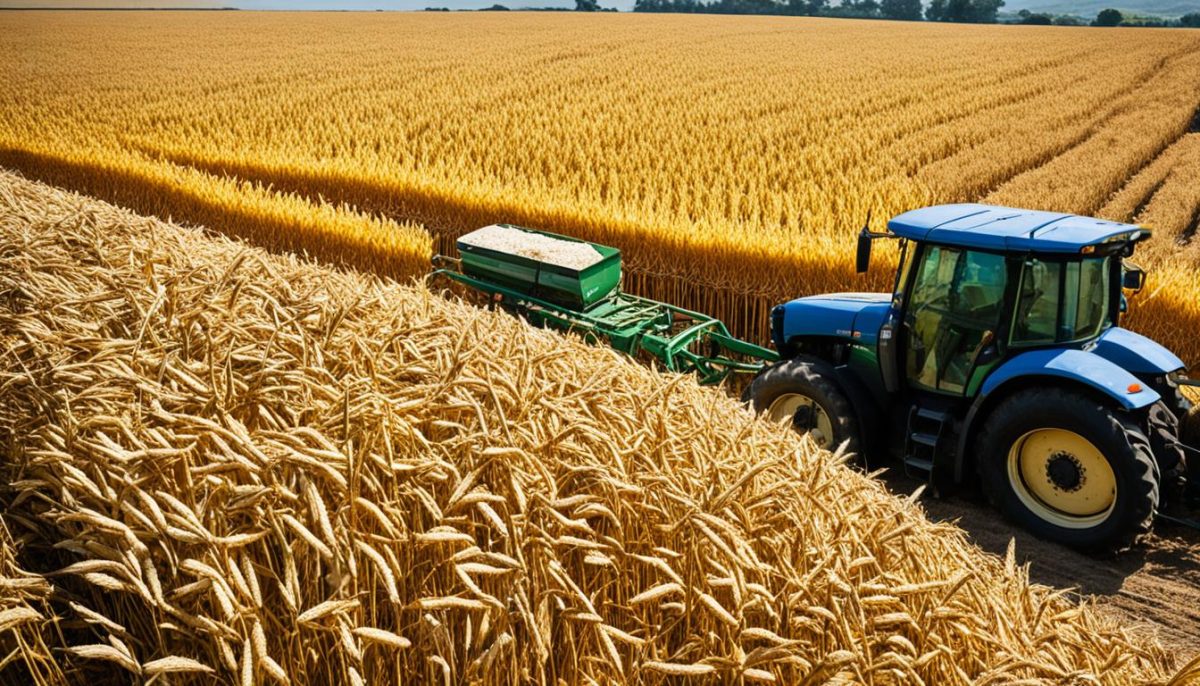Creating a sustainable future requires us to explore alternative sources of fuel that can reduce our dependence on traditional fossil fuels. One promising solution lies in the conversion of biomass into alternative fuels. Biomass refers to organic matter, such as plants and animal waste, that can be utilized for energy production.
In this article, we will delve into the four main types of biomass that can be transformed into alternative fuels. By understanding these types of biomass and their potential, we can pave the way for a greener and more sustainable future.
Wood is one of the oldest and most widely used biomass sources for alternative fuels. It can be converted into various forms such as wood pellets, chips, and logs.
Agricultural residues, which include crop residues and animal waste, offer abundant sources of biomass that can be transformed into alternative fuels.
Lastly, we will explore biogas and biofuels as biomass alternative fuels. Biogas is produced through the decomposition of organic waste, while biofuels are derived from various biomass sources such as algae or non-edible plant oils.
To learn more about these four types of biomass and their conversion into alternative fuels, continue reading this article. Together, we can work towards a sustainable future.
Wood as Biomass Alternative Fuel
Wood has been used as a biomass source for alternative fuels for centuries. Its versatility and abundance make it a popular choice in the renewable energy sector. By converting wood into different forms such as wood pellets, chips, and logs, we can harness its energy potential and reduce our reliance on traditional fossil fuels.
The process of converting wood into alternative fuels involves several steps. First, the wood is harvested and collected from sustainable forestry practices. It is then processed and transformed into the desired form, depending on the application. For example, wood pellets are compressed wood particles, while wood chips are small pieces of wood used in heating and power generation.
One of the key advantages of using wood as a biomass alternative fuel is its renewability. Wood can be sustainably sourced from well-managed forests, ensuring a continuous supply. Additionally, when wood is burned as fuel, it releases carbon dioxide (CO2), but this CO2 is offset by the growing trees that absorb CO2 through photosynthesis. This creates a carbon-neutral cycle, making wood a more environmentally friendly option.
Wood also offers economic benefits as it can be sourced locally, reducing dependency on imported fossil fuels. This can help promote local economies and create job opportunities in the forestry and renewable energy sectors.
Benefits and Potential Drawbacks of Wood as Biomass Alternative Fuel
Wood offers several benefits as a biomass alternative fuel:
- Renewable and sustainable source
- Carbon-neutral cycle
- Local sourcing and economic growth
However, there are potential drawbacks that need to be considered:
- Deforestation: If not managed sustainably, the increased demand for wood as biomass fuel may lead to deforestation and habitat loss.
- Emissions: While wood is considered carbon-neutral, the combustion process can still produce some emissions, such as particulate matter and volatile organic compounds.
- Transportation: Depending on the location of biomass sources, transportation can have a significant environmental impact if not carefully planned and optimized.
Overall, wood is a valuable biomass alternative fuel that offers both environmental and economic advantages. Its renewability and carbon-neutral cycle make it an attractive option for transitioning towards a sustainable future.
Agricultural Residues as Biomass Alternative Fuel
Agricultural residues, such as crop residues (including corn stalks and wheat straw) and animal waste, offer a vast and sustainable source of biomass that can be converted into alternative fuels. These residues, which are generated in large quantities from farming activities, are often left unused or discarded. However, with the right technology and processes, they can become valuable feedstock for fuel production, providing a renewable and environmentally friendly alternative to traditional fossil fuels.

Utilizing agricultural residues as biomass alternative fuel presents both challenges and opportunities. One of the primary challenges is the collection and transportation of these residues from farms to the conversion facilities. Specialized equipment and logistics need to be in place to handle the diverse nature and large volumes of agricultural residues.
Furthermore, the composition and characteristics of agricultural residues can vary depending on the type of crop or animal waste. This diversity requires flexible and efficient processing technologies that can accommodate different feedstock properties and produce high-quality alternative fuels.
Benefits of Agricultural Residues as Biomass Alternative Fuel
The utilization of agricultural residues as biomass alternative fuel offers several significant benefits:
- Economic Opportunities: Converting agricultural residues into alternative fuels can create new economic opportunities for farmers and rural communities. By monetizing waste materials, farmers can generate additional income and contribute to local economic growth.
- Reduced Waste Disposal: Instead of being left to decompose or burned inefficiently, agricultural residues can be utilized for fuel production, reducing waste disposal issues and potential environmental pollution.
- Lower Carbon Footprint: When compared to fossil fuels, biomass alternative fuels derived from agricultural residues have a significantly lower carbon footprint. They offer a renewable and sustainable solution to combat climate change and reduce greenhouse gas emissions.
- Energy Independence: By harnessing agricultural residues for fuel production, countries can reduce their reliance on imported fossil fuels, enhancing energy independence and security.
The Future of Agricultural Residues as Biomass Alternative Fuel
The use of agricultural residues as biomass alternative fuel is gaining traction worldwide as governments and industries strive to achieve sustainable energy solutions. Ongoing research and development efforts are focused on improving the efficiency and scalability of conversion technologies, making them more accessible and cost-effective.
Moreover, the integration of agricultural residue utilization with existing farming practices can create a circular economy, where waste materials become valuable resources, promoting a more sustainable and resilient agricultural sector.
| Challenges | Opportunities |
|---|---|
| Collection and transportation logistics | Economic opportunities for farmers Reduced waste disposal issues |
| Diversity of feedstock characteristics | Lower carbon footprint Energy independence |
By overcoming these challenges and capitalizing on the opportunities, the utilization of agricultural residues as biomass alternative fuel has the potential to play a crucial role in achieving a sustainable and greener future for energy production.
Biogas and Biofuels as Biomass Alternative Fuels
As we explore the realm of biomass alternative fuels, we cannot overlook the incredible potential of biogas and biofuels. Biogas, a byproduct of the natural decomposition of organic waste, offers a sustainable solution for energy production.
Through the anaerobic digestion process, organic materials like food scraps, agricultural waste, and sewage can be transformed into biogas. This versatile fuel source can then be used for heating, electricity generation, and even as a transportation fuel. With its renewable nature and ability to reduce greenhouse gas emissions, biogas presents a promising path toward a cleaner, greener future.
Similar to biogas, biofuels are derived from various biomass sources like algae or non-edible plant oils. These fuels can serve as a direct replacement or blend with traditional fossil fuels, reducing our reliance on finite resources and minimizing environmental impact. Additionally, biofuels offer opportunities for waste utilization, agricultural diversification, and economic growth.

